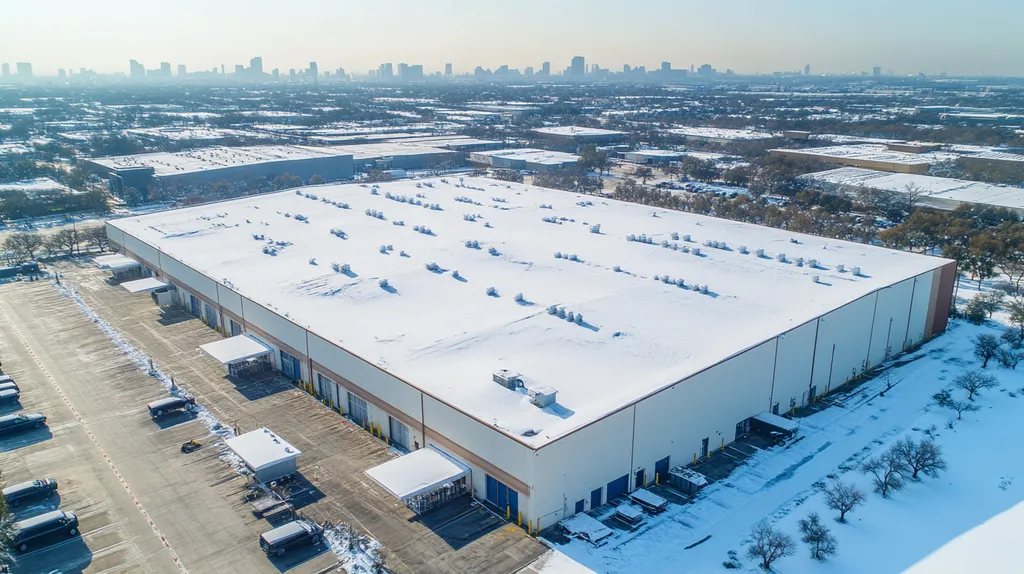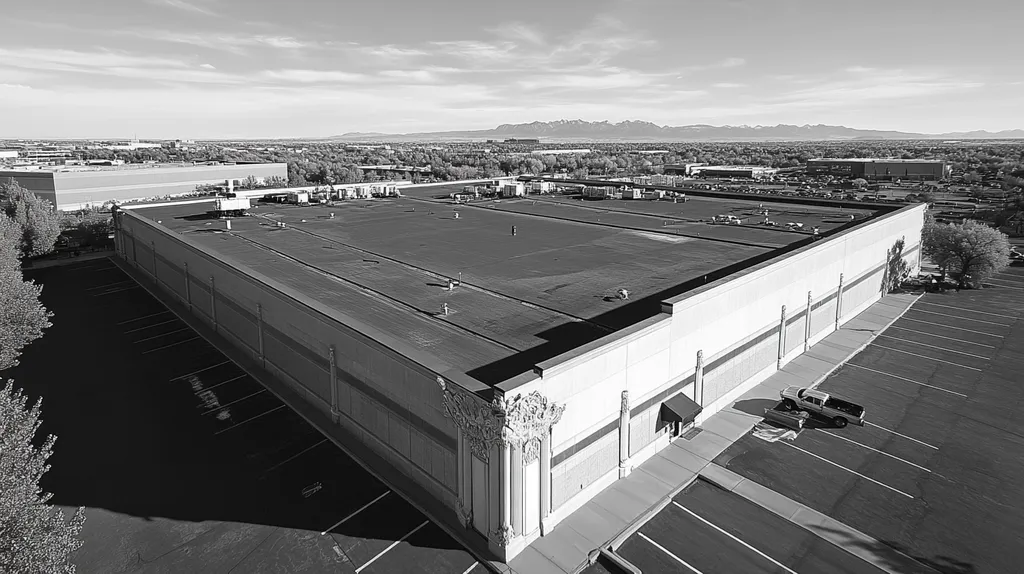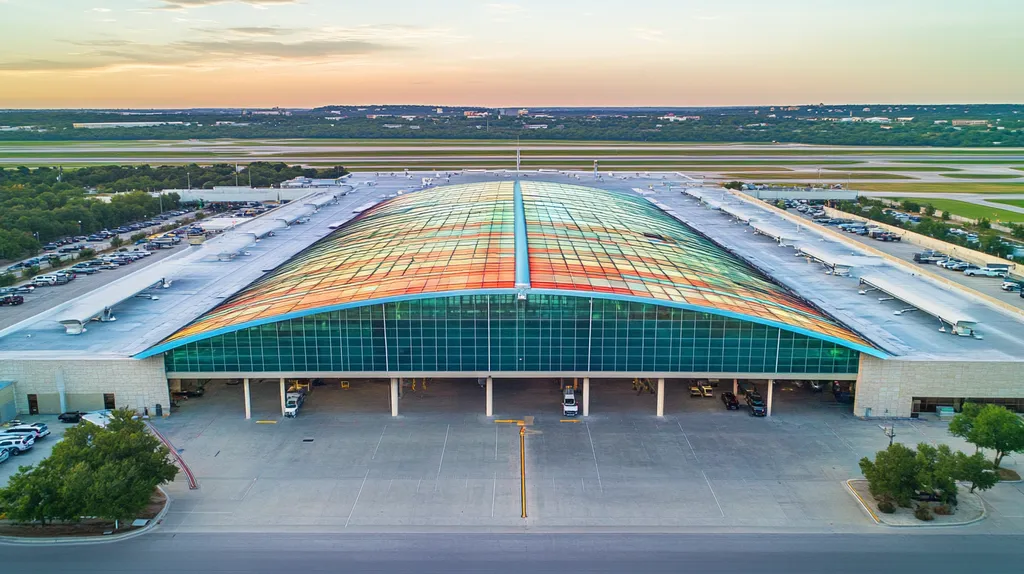Commercial roofs account for over 15% of a typical building’s energy loss, making them a critical frontier in the battle for sustainable construction. As energy costs continue to rise and environmental regulations tighten, facility managers face mounting pressure to find effective roofing solutions.
Modern coating technologies offer a powerful but often misunderstood tool for achieving sustainability goals. When properly selected and applied, these systems can reduce cooling costs by up to 30% while extending roof life by 10-15 years.
This comprehensive guide examines the essential elements of commercial roof coatings, from basic principles to advanced applications, helping property owners make informed decisions that benefit both their bottom line and the environment.
SECTION 1: THE BASICS EXPLAINED
Commercial roofing represents one of the largest opportunities for improving building sustainability and reducing operational costs. Studies show that poorly maintained or uncoated roofs can increase cooling costs by up to 30% during peak summer months. As businesses face mounting pressure to reduce their environmental impact while managing expenses, understanding roof coating fundamentals has become essential for property owners and facility managers.
What It Is (In Plain Language)
Roof coatings are specialized liquid materials that create a protective, seamless layer over existing commercial roofing systems. These coatings act like a shield, defending the roof against UV rays, rain, and temperature fluctuations that cause premature aging.
Modern coating systems come in several formulations, including acrylic, silicone, and polyurethane. Each type offers specific advantages, from superior waterproofing to enhanced solar reflectivity, allowing building owners to select solutions that match their particular needs.
The application process involves thoroughly cleaning the roof surface, making necessary repairs, and then applying the coating in uniform layers. This creates a continuous membrane that seals and protects the entire roof system.
These coatings support sustainability in construction by reducing emissions, minimizing waste, and enhancing energy efficiency across the building envelope. (source: Silicone for Building)
Why It Matters (To Your Building)
A properly coated roof directly impacts a building’s energy consumption and environmental footprint. By reflecting sunlight and heat, these systems can reduce roof surface temperatures by up to 50°F, leading to significant cooling cost savings.
Beyond immediate energy benefits, roof coatings extend the life of existing roofing materials by protecting them from environmental damage. This extension reduces the frequency of full roof replacements, keeping thousands of pounds of waste out of landfills.
Coatings also contribute to building certification programs like LEED and Energy Star, helping organizations meet their sustainability goals. These certifications can increase property value and attract environmentally conscious tenants.
The financial impact extends beyond energy savings, as coated roofs typically require less maintenance and fewer repairs over their lifetime. This reduced maintenance burden translates to lower operational costs and better resource allocation.
How It Works
Roof coatings function through a combination of physical and chemical properties that work together to protect and enhance roof performance. The primary mechanism involves reflecting solar radiation while maintaining a strong barrier against moisture.
When solar radiation hits a coated roof, specially engineered pigments and compounds reflect much of this energy back into the atmosphere. This reflection prevents heat absorption and transfer into the building, reducing the cooling load on HVAC systems.
The waterproofing aspect works through the coating’s ability to form a continuous, flexible membrane. This membrane expands and contracts with temperature changes while maintaining its protective properties.
Advanced formulations include additives that resist dirt accumulation and biological growth, helping maintain reflective properties over time. Regular maintenance ensures these protective features continue functioning at optimal levels throughout the coating’s service life.
SECTION 2: PRACTICAL APPLICATIONS
Today’s commercial buildings face unprecedented challenges in meeting sustainability goals while controlling costs. Rising energy prices, stricter environmental regulations, and increasing extreme weather events demand innovative roofing solutions. Modern roof coatings have emerged as a critical technology that helps facility managers address these challenges while protecting their buildings and bottom line.
Common Uses & Examples
The most immediate application of roof coatings is temperature control and UV protection. Cool roof coatings can reduce surface temperatures by up to 80°F during peak summer conditions, making them particularly valuable for warehouses, manufacturing facilities, and retail spaces.
Large commercial buildings with extensive HVAC equipment benefit from coatings that provide superior waterproofing around penetrations and equipment mounts. These areas are particularly vulnerable to leaks and deterioration without proper protection.
Data centers and technology facilities utilize specialized coatings that offer enhanced protection against thermal shock and moisture intrusion. These properties are crucial for maintaining stable internal environments for sensitive equipment.
Distribution centers and industrial facilities often employ coatings to address specific challenges like chemical resistance and enhanced durability. These applications help protect valuable inventory and equipment while extending roof life.
When You Need It Most
Timing is crucial when considering roof coatings. Buildings experiencing higher-than-normal energy costs during summer months are prime candidates for reflective coating applications.
Facilities approaching the 15-20 year mark in their roof lifecycle should consider protective coatings as a preventive measure. This approach can add 10-15 years to the roof’s serviceable life while avoiding premature replacement.
Buildings in regions with extreme temperature fluctuations benefit most from coating applications in spring or fall. These moderate temperatures ensure optimal curing conditions and maximum coating performance.
Emergency situations, such as developing leaks or storm damage, often require immediate coating solutions to prevent further deterioration and protect building contents.
Interactions With Other Systems
Roof coatings work synergistically with existing building systems to maximize performance. When integrated with smart building controls, coated roofs provide data that helps optimize HVAC operation and energy usage.
Solar panel installations achieve higher efficiency when mounted on coated surfaces. The reflective properties of the coating help reduce ambient temperature around the panels, improving their power generation capacity.
Building automation systems can monitor coated roof performance through temperature sensors, helping facility managers track energy savings and identify maintenance needs before they become critical issues.
Modern coating systems contribute significantly to whole-building sustainability initiatives. By reducing cooling loads and extending roof life, these coatings help minimize waste while maximizing resource efficiency across the entire building envelope.
SECTION 3: KEY TERMINOLOGY DECODED
Clear understanding of roofing terminology directly impacts both sustainability outcomes and bottom-line costs. Studies show that miscommunication around technical terms leads to 23% of commercial roofing failures, resulting in wasted materials and increased energy consumption. For facility managers pursuing sustainability goals, mastering these key concepts isn’t just about better communication – it’s about making informed decisions that protect both their buildings and the environment.
Essential Terms Explained
Solar reflectance index (SRI) measures a roof’s ability to reject solar heat. Higher SRI values indicate better heat rejection, which directly correlates to reduced cooling costs and lower urban heat island effects.
Thermal emittance describes how readily a surface gives up heat. Materials with high emittance quickly release absorbed heat, preventing it from transferring into the building and reducing cooling loads.
Permeability ratings indicate how well a coating resists water vapor transmission. Lower permeability means better moisture protection, which is crucial for maintaining insulation effectiveness and preventing premature roof deterioration.
Cool roof performance relies on both initial and aged reflectance values. While initial reflectance shows immediate benefits, aged values predict long-term energy savings and sustainability impact.
Industry Jargon Translated
Substrate compatibility refers to how well a coating bonds with the existing roof surface. Proper compatibility ensures maximum coating lifespan and optimal performance of sustainability features.
Cure time indicates how long a coating needs to reach full protective properties. Understanding cure times is essential for planning installation around weather conditions and maintaining building operations.
Film build describes the thickness of dried coating layers. Correct film build ensures proper protection while avoiding excess material waste and unnecessary weight on the roof structure.
Edge detail refers to special coating applications around roof perimeters. Proper edge details prevent premature failure and maintain the coating’s environmental benefits throughout its service life.
Measurement & Units Simplified
Coverage rates are measured in square feet per gallon. Understanding these rates helps calculate material needs accurately, reducing waste and ensuring complete protection.
Temperature requirements are typically expressed in both ambient air and surface readings. These measurements determine ideal application conditions for maximum coating performance and longevity.
Elongation percentage indicates how much a coating can stretch without breaking. Higher elongation values mean better performance during building movement and temperature changes.
Wind uplift resistance is measured in pounds per square foot. This rating becomes increasingly important as climate change drives more extreme weather events, affecting both building protection and insurance costs.
SECTION 4: DECISION FACTORS
The selection of appropriate roof coatings represents a critical decision point where sustainability goals intersect with business operations. Research shows that ineffective coating choices can result in up to 35% higher energy costs and premature roof failure. As building owners face increasing pressure to reduce environmental impact while managing expenses, understanding the key decision factors has become essential for long-term success.
Cost Considerations
Initial coating costs typically range from $2-8 per square foot, varying significantly based on material type and application complexity. However, focusing solely on upfront costs often leads to suboptimal long-term outcomes.
Roof coatings are more than just a protective layer – they represent a strategic investment in building sustainability. Quality coatings can extend roof life by 10-15 years while reducing cooling costs by up to 30%. (source: Instacoat)
Energy rebates and tax incentives can offset 20-40% of coating costs in many regions. These programs specifically target reflective and energy-efficient coating solutions that support broader sustainability initiatives.
Maintenance requirements also impact total ownership costs. Premium coatings often require less frequent maintenance and repair, reducing long-term expenses while minimizing waste.
Performance Trade-offs
Different coating types offer distinct performance characteristics that must align with specific building requirements. Silicone coatings provide superior UV resistance and waterproofing but may attract dirt more readily than other options.
Climate conditions heavily influence coating performance. Hot climates benefit most from highly reflective coatings, while areas with frequent rainfall require excellent waterproofing properties.
Application thickness affects both immediate performance and long-term durability. Thicker applications provide better protection but increase material costs and installation complexity.
Surface preparation quality directly impacts coating adhesion and longevity. Proper cleaning and repairs may increase initial costs but significantly enhance performance outcomes.
Lifespan & Durability Factors
Coating lifespan varies dramatically based on environmental exposure and maintenance practices. Premium systems can last 20+ years with proper care, while budget options may require replacement within 5-7 years.
UV resistance and weathering characteristics determine how well coatings maintain their protective properties over time. High-quality materials retain reflectivity longer, supporting sustained energy savings.
Physical durability metrics include tensile strength, elongation, and tear resistance. These properties indicate a coating’s ability to withstand building movement and thermal cycling.
Regular inspections and preventive maintenance can extend coating life by 25-40%. This proactive approach reduces waste and supports long-term sustainability goals.
SECTION 5: COMMON CHALLENGES
Despite significant advances in coating technology, commercial roofing projects still face substantial obstacles in achieving sustainability goals. Industry data shows that up to 40% of coating applications fail to deliver their full environmental and financial benefits due to preventable issues. Understanding and addressing these challenges is crucial for property owners and facility managers who seek to maximize their return on investment while meeting environmental objectives.
Frequent Problems & Solutions
Surface preparation remains the leading cause of coating failures, accounting for nearly 60% of all performance issues. Proper cleaning, repair, and priming are essential steps that cannot be rushed or overlooked.
Using sustainable roof coatings properly can dramatically reduce maintenance costs while protecting both people and the environment during application. These solutions offer enhanced safety features and reduced environmental impact through lower VOC emissions and waste reduction. (source: Castagra)
Weather-related application challenges frequently disrupt coating projects. Temperature, humidity, and precipitation must all fall within acceptable ranges for proper curing and adhesion.
Building movement and thermal cycling can stress coating systems beyond their design limits. Selecting coatings with appropriate elongation properties and reinforcement at high-stress areas helps prevent these failures.
Warning Signs To Watch For
Early detection of coating issues can prevent catastrophic failures and preserve sustainability benefits. Regular inspections should focus on areas where water tends to pond or collect, as these locations often show the first signs of degradation.
Changes in interior temperature patterns or unexpected increases in cooling costs may indicate coating performance degradation. These symptoms often appear before visible damage becomes apparent on the roof surface.
Blistering, cracking, or separation at seams and penetrations requires immediate attention. These defects can quickly escalate into major problems that compromise both waterproofing and energy efficiency.
Loss of reflectivity or coating thickness indicates accelerated weathering. Regular measurements of these properties help maintain optimal energy performance and protect the underlying roof system.
Preventative Approaches
Implementing a comprehensive maintenance program represents the most effective strategy for preserving coating performance. This should include scheduled inspections, cleaning, and prompt repairs of any identified issues.
Documentation of all coating applications, repairs, and inspections provides valuable data for tracking performance trends. This information helps optimize maintenance schedules and predict potential problems before they develop.
Staff training on proper roof access protocols and maintenance procedures helps prevent accidental damage. Even minor foot traffic can impact coating performance if proper walkway systems aren’t established and maintained.
Integration of coating maintenance with other building systems ensures coordinated responses to problems. This approach helps preserve both the coating’s protective properties and its contribution to overall building sustainability.
SECTION 6: NEXT STEPS & RESOURCES
The commercial roofing industry faces unprecedented pressure to deliver sustainable solutions amid rising energy costs and stricter environmental regulations. Studies show that improper coating decisions can increase building energy consumption by up to 35% while shortening roof lifespans by half. As extreme weather events become more frequent, making informed coating choices has evolved from a maintenance decision to a critical sustainability imperative.
Questions To Ask Providers
Start by requesting detailed performance data on energy savings and carbon reduction. Quality providers should offer documented case studies showing actual results in similar building types and climate zones.
Investigate the coating system’s complete environmental impact, including VOC content, recyclability, and contribution to waste reduction. Leading manufacturers now provide Environmental Product Declarations (EPDs) that detail these sustainability metrics.
Ask about application requirements and limitations that could affect long-term performance. Understanding proper surface preparation, weather restrictions, and cure times helps ensure optimal sustainability benefits.
Discuss ongoing maintenance needs and warranty coverage in detail. The most sustainable solutions typically offer extended service life with minimal maintenance requirements.
Industry Standards & Guidelines
The Architectural Graphic Standards provides comprehensive guidance on sustainable building materials and practices, helping facility managers select coating systems that maximize environmental benefits while meeting performance requirements. (source: Architectural Graphic Standards)
Reference ASTM D6083 for acrylic coating requirements and ASTM D6694 for silicone coating standards. These guidelines establish minimum performance criteria for reflectivity, elongation, and weathering resistance.
Consult Energy Star and Cool Roof Rating Council (CRRC) databases for certified products. These resources provide independently verified performance data for comparing coating options.
Review local building codes and insurance requirements that may affect coating selection. Many jurisdictions now mandate minimum reflectivity values or specific performance characteristics.
Further Learning Simplified
Access free educational resources through major coating manufacturers’ technical libraries. These often include detailed application guides, case studies, and sustainability calculators.
Join professional organizations like BOMA or IFMA that offer regular training on sustainable building practices. Their educational programs frequently cover advances in coating technology.
Attend industry trade shows and conferences focused on commercial roofing sustainability. These events provide opportunities to evaluate new products and connect with experts.
Subscribe to industry publications that track developments in sustainable roofing practices. Many offer digital archives searchable by topic for convenient reference.
Looking Ahead
With commercial buildings accounting for nearly 40% of global energy consumption, the role of sustainable roof coatings has never been more critical.
Modern coating technologies offer a proven path to reduce environmental impact while delivering substantial cost savings, with quality systems capable of cutting cooling expenses by up to 30% and extending roof life by 10-15 years.
As regulations tighten and energy costs continue to rise, facility managers who embrace these solutions position their properties for long-term success.
The technology exists today to transform millions of square feet of commercial roofing from energy liabilities into sustainable assets that benefit both building owners and the environment.
The question is no longer whether to implement sustainable coating solutions, but how quickly organizations can adopt these essential technologies.
FREQUENTLY ASKED QUESTIONS
Q. What is a commercial roof coating?
A. A commercial roof coating is a liquid material applied to existing roofs, creating a protective layer. It shields against UV rays, moisture, and temperature changes, enhancing energy efficiency and extending roof lifespan.
Q. How do coatings benefit industrial roofs?
A. Coatings improve energy efficiency by reflecting sunlight, significantly lowering cooling costs. They also extend the roof’s life by protecting against environmental damage and reducing waste from frequent replacements.
Q. What key terms should I understand about coatings?
A. Important terms include solar reflectance index, thermal emittance, and permeability ratings. Knowing these helps ensure you choose the best product for energy savings and durability of your roofing system.
Q. How do I choose the right coating for my building?
A. Consider factors like cost, performance characteristics, climate conditions, and maintenance needs. Investing in high-quality coatings is essential for longevity and achieving your sustainability goals effectively.
Q. What challenges might I face with coatings?
A. Common issues include improper surface preparation, weather-related application problems, and building movement. Addressing these challenges through careful planning and product selection is crucial for optimal performance.
Q. What questions should I ask coating providers?
A. Ask for performance data, environmental impact documentation, application requirements, and maintenance needs. This information helps ensure you choose a coating system that meets your long-term sustainability objectives.
Q. What are the benefits of energy-efficient coatings?
A. Energy-efficient coatings reduce cooling costs, enhance comfort, and lower carbon emissions. These coatings also support green building certifications, attracting environmentally conscious tenants and improving property value.










